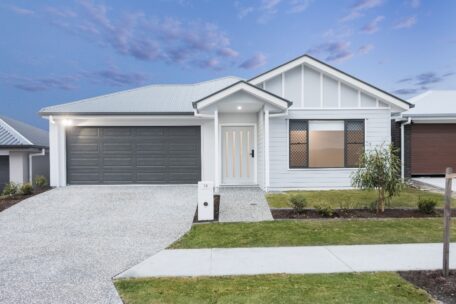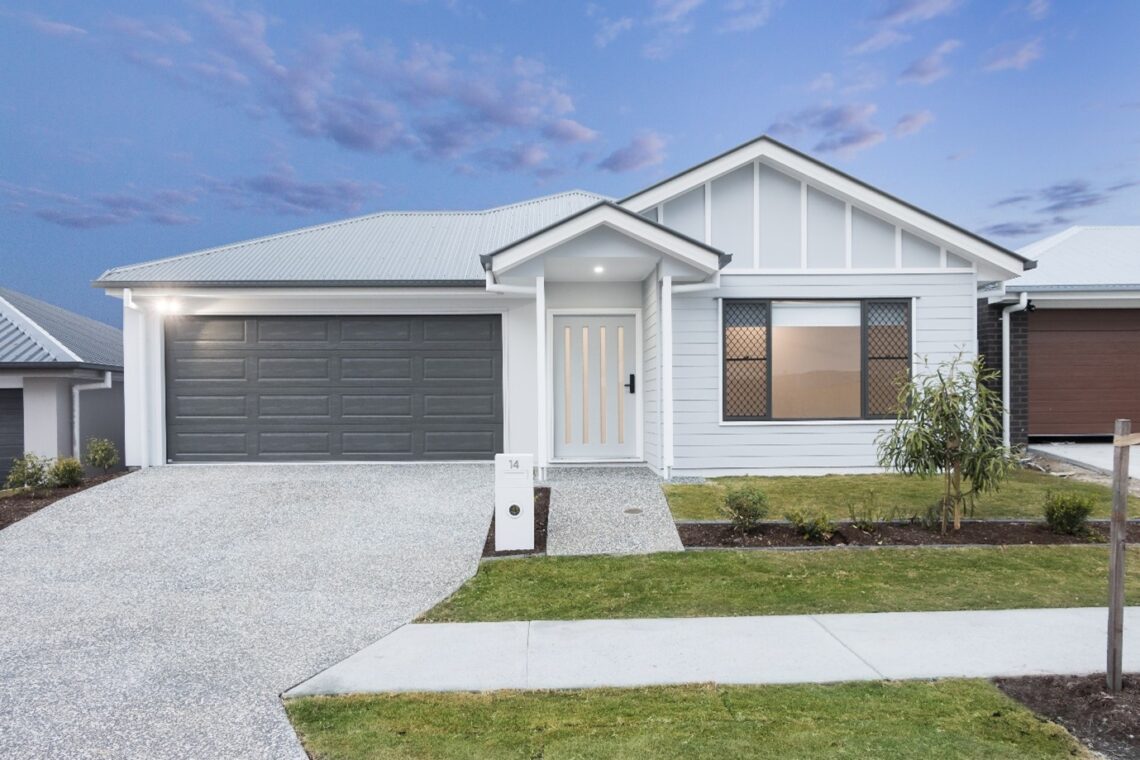How long does it take to build a house? It doesn’t matter if you’re a first-time buyer or building your dream home—understanding the process helps you plan. Many factors influence the time it takes to build, including design, approvals, and builder availability. Knowing these elements can help you avoid delays and budget effectively.
Building a home is an exciting journey, but timelines can vary. By understanding each stage and what impacts construction time, you can set realistic expectations and make informed decisions. Read on to learn about the key factors, average build times, and how to speed up the process to move into your new home sooner.

Average Time to Build a House in Australia
The average build time for a house in Australia is 20 weeks. However, factors such as house design, block of land conditions, and council approval can take longer. Custom builds or larger homes may take up to a year. New home building timelines depend on the specifics of the site and project requirements. Choosing a reputable builder can help streamline the process and keep things on track.
The construction process involves various stages, from approvals to the final handover. Each stage requires careful planning and execution to ensure timely completion. While some homes are built faster, unexpected delays such as material shortages or extreme weather can extend the timeframe. Working with an experienced builder can help mitigate these risks and keep your project moving forward.
Factors That Affect How Long It Takes to Build a House
Several factors determine the timeframe for building a house, including:
- Approval Process: Council approval can take about three months, delaying the start of construction. The approval process varies based on location, complexity, and the local council’s requirements. Planning approval is essential before breaking ground, so it is crucial to start the process early to avoid unnecessary delays. Learn more about building permits and approvals here.
- Site Preparation: Soil testing is conducted before construction to ensure stability. The specifics of the site, such as land slope and retaining walls, can impact the preparation time. A block of land with poor soil conditions may require additional work, increasing the overall timeframe.
- Weather Conditions: Torrential rain or extremely hot days can delay building progress. Construction time is significantly affected by environmental factors, particularly during storm seasons. Extreme heat can also impact certain stages, such as pouring a concrete slab, which requires ideal weather conditions for optimal curing.
- Builder Availability: A reliable home builder ensures the project stays on track. The availability of tradespeople can also influence the timeline. If a tradesperson is booked out or delayed on another project, it may extend the time it takes to build.
- Material Supply: Delays in material delivery can delay the completion time. Supply chain disruptions, transportation issues, or high demand for specific building materials can cause unexpected setbacks. To prevent delays, some building companies order materials in advance or source from multiple suppliers.
Understanding the Stages of Building a House
The home building process generally takes several months and involves key stages:
- Planning & Approvals: Local council approvals, planning approval, and soil testing. Before any construction begins, council approval can take up to a few months. This step ensures compliance with building regulations and zoning laws, helping avoid costly adjustments later.
- Site Preparation & Slab Stage: Earthworks, plumbing installation, and pouring the concrete slab. Preparing the land involves clearing vegetation, levelling, and ensuring the soil is stable for construction. The slab forms the foundation of the house and must be cured properly before proceeding to the next stage.
- Frame Stage: Structural framework construction. The home begins to take shape as the framework is built. This stage includes constructing walls, roof trusses, and installing support structures. Proper planning ensures this phase is completed efficiently and within the expected timeframe.
- Lock-Up Stage: Roof, walls, windows, and doors installed. At this stage, the home becomes weatherproof. Windows and doors are secured, allowing internal work to begin without interference from weather conditions.
- Fixing Stage: Internal fittings, electrical, and plumbing work. This phase involves installing cabinetry, flooring, and electrical wiring. Plumbing is connected, and insulation is installed to prepare for final finishes.
- Final Touches & Handover: Painting, landscaping, and finishing touches. Before handover, quality checks and final inspections take place to ensure everything meets building standards. This step ensures that the new house is ready for occupancy.
How Long Does It Take to Build a 3-Bedroom House?
A standard home with three bedrooms usually takes about 20 to 25 weeks to complete. Custom designs or additional features may take at least three months longer. The timeframe depends on the construction process and specifics of the site. Ensuring materials and tradespeople are scheduled in advance can help maintain the timeline.
Most project homes follow a structured plan, allowing efficient completion. However, delays in council approval, adverse weather, or unforeseen complications can extend the process. Homeowners should consider these factors and communicate regularly with their builder to track progress and address potential setbacks early.
How Long Does It Take to Build a 4-Bedroom House?
A four-bedroom home build typically takes anywhere from 25 to 30 weeks. If the home has a complex design or high-end finishes, it could take up to a year to build. Larger homes require more materials, labour, and time, making them more susceptible to delays.
The construction process in Australia is influenced by builder availability, construction time, and planning approval. Larger homes require additional site preparation, larger slabs, and extensive internal work, all of which contribute to a longer build time. Proper planning can ensure an efficient and smooth process.
How Long Does It Take to Build a House in QLD?
Building a house in Queensland depends on climate conditions and builder availability. A level building on flat land may take about three to four months, while a custom build can take longer. Conditions such as torrential rain or extremely hot days can delay construction.
Queensland’s weather patterns vary throughout the year, impacting construction schedules. Summer months often bring heavy rainfall, which may delay earthworks and slab pouring. Homeowners should work with experienced builders familiar with local climate challenges to minimise delays.
How Long Will It Take to Build a New Home with a House and Land Package?
A house and land package can shorten construction time. Many factors, such as pre-approved designs and site readiness, influence the timeframe. These homes are built in planned communities, reducing delays. New housing estates are constructed efficiently to meet demand.
Building companies often streamline the process by preparing infrastructure and approvals in advance. This reduces wait times and ensures quicker completion. House and land packages can be an ideal option for homeowners looking for a faster, more efficient building experience.
How to Speed Up Your Home Build
- Choose an Experienced Builder: A trusted home builder ensures the process stays on schedule. They have established processes, reliable tradespeople, and experience handling unforeseen issues, reducing delays and improving efficiency.
- Get Approvals Early: Council approval can take months, so start the process as soon as possible. Early applications help prevent unexpected delays and allow you to begin construction on time.
- Use Pre-Designed Plans: Standard home designs require fewer modifications, saving time. Custom designs take longer due to additional approvals, adjustments, and engineering work.
- Plan for Weather Conditions: Rain or extremely hot days can cause delays. Scheduling key construction phases during optimal weather seasons can help avoid disruptions and keep the project on track.
- Secure Materials in Advance: Shortages can lead to a delay of up to eight weeks. Ordering materials early ensures availability and prevents waiting periods that can impact progress.
AVIA Homes: Your Trusted Home Builder in Queensland
AVIA Homes specialises in building a new house tailored to your needs. As a leading home builder in Queensland, we focus on quality, efficiency, and customer satisfaction. Our streamlined building process ensures timely project completion. Contact us today to build your new home with confidence. Our expert team is ready to guide you through every step of the journey, ensuring your home is built to the highest standards.
